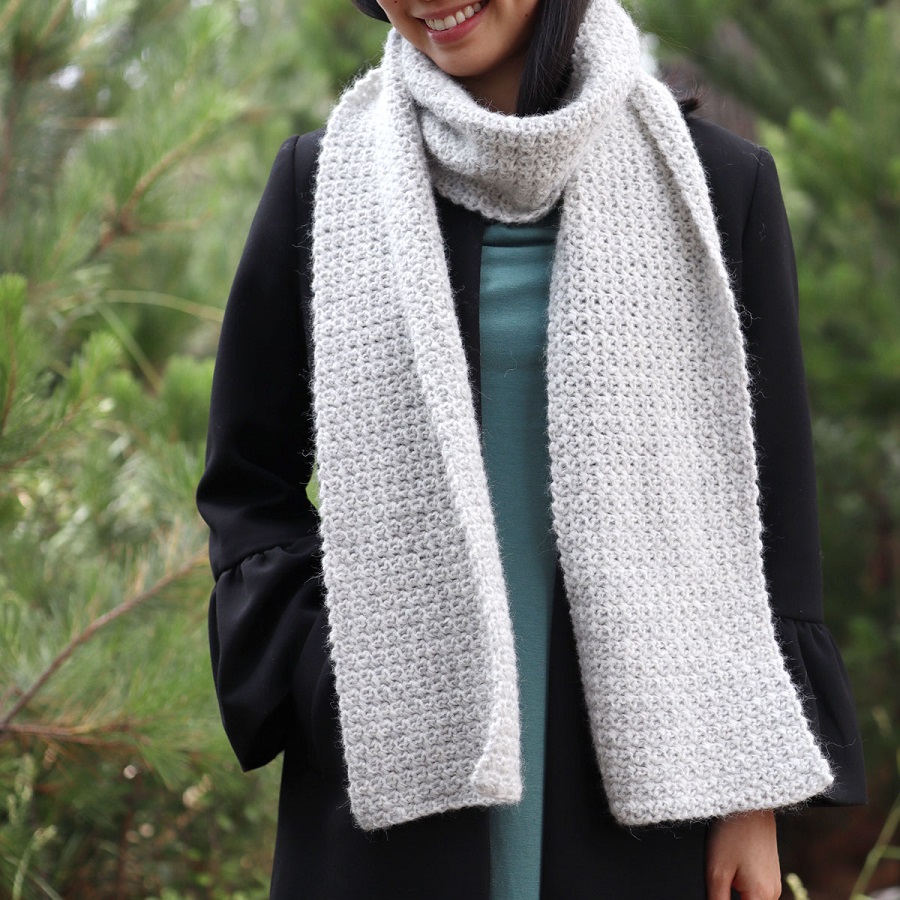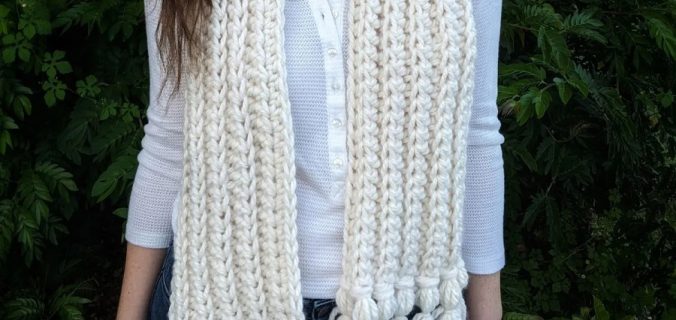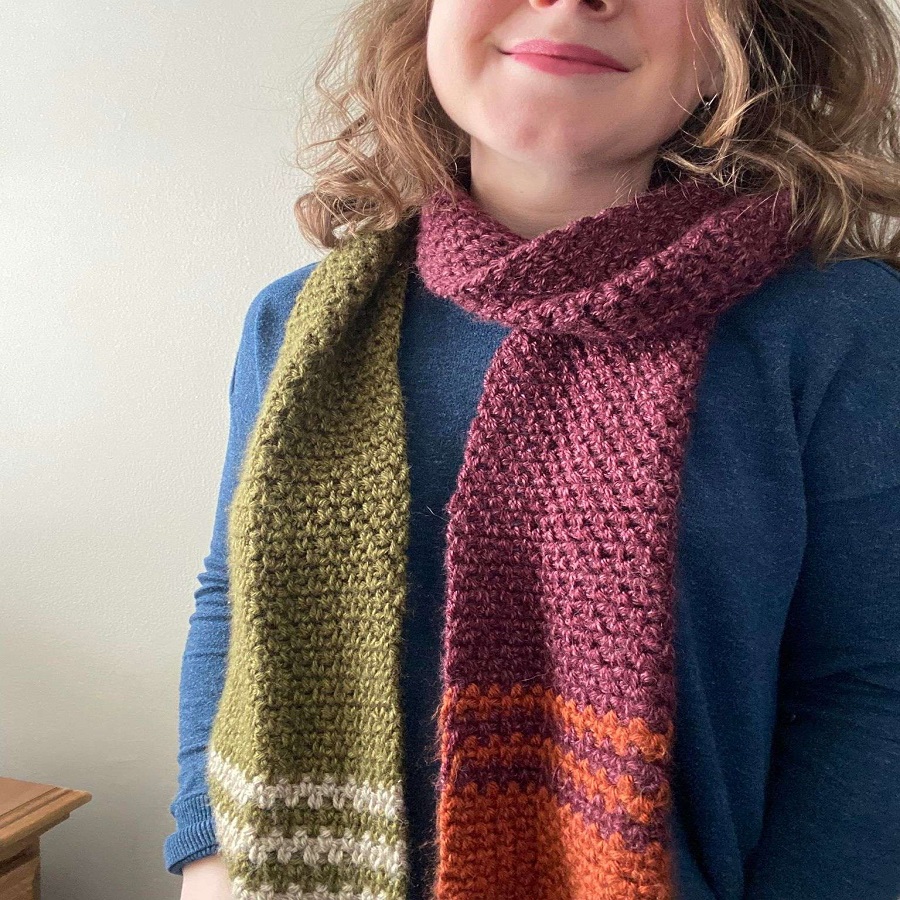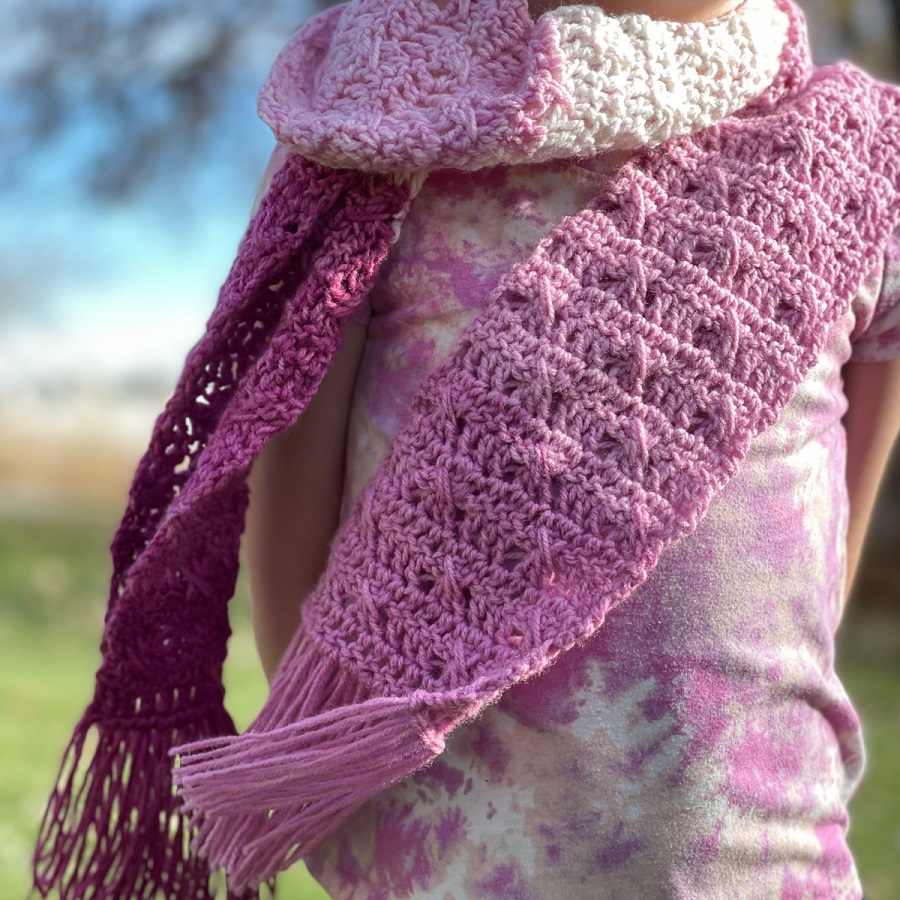Introduction to Crocheting a Scarf
Crocheting a scarf is a fulfilling project for both beginners and experienced crafters. It’s a simple way to practice your skills while creating something warm and stylish. Whether you are new to the craft or looking to brush up on your techniques, this guide on how to crochet a scarf step by step will provide you with all the necessary information to get started. You will learn about the tools required, the basic stitches, how to read patterns, and, finally, the steps to create your very own handmade scarf. With patience and practice, you’ll be able to crochet a beautiful accessory that you can wear or give as a thoughtful gift. Let’s embark on this creative journey together and transform a skein of yarn into a cozy scarf.
 Essential Crochet Tools and Materials
Essential Crochet Tools and Materials
Before delving into the steps on how to crochet a scarf step by step, you need to gather the essential tools and materials. Having the right equipment at hand will make your crocheting experience much more enjoyable and efficient. Here’s what you’ll need to start your scarf project:
- Crochet hooks: These are the primary tools for crocheting. They come in various sizes, so for beginners, a size H-8 (5mm) hook is a good starting point.
- Yarn: The choice of yarn can greatly influence the texture and drape of your scarf. A medium-weight yarn, also known as worsted weight, is ideal for beginners.
- Scissors: You’ll need a pair of sharp scissors for cutting yarn.
- Yarn needle: When your scarf is complete, a yarn needle will help you weave in the ends.
- Measuring tape: This will help you measure the length of your scarf as you go.
Optional items that can enhance your crocheting experience include stitch markers for keeping track of your work and a crochet hook organizer to keep your hooks in order. Once you’ve assembled these items, you’re ready to move on to learning the basic stitches in the next section of our guide.
Crochet Stitches Basics
Before you begin crocheting your scarf, it’s vital to understand the basics of crochet stitches. Mastery of these will allow you to follow patterns with ease and ensure your scarf has a neat and consistent look. We’ll go through the foundational stitches you need to know, starting with the slip knot and chain stitch, then move onto single and double crochet stitches.
Starting With a Slip Knot and Chain Stitch
The very first step in crocheting is learning to make a slip knot. To create this, simply loop the yarn around your fingers and pull the yarn’s end through to form a knot. Adjust the knot so it slides along the yarn without coming loose. Next, you must learn the chain stitch which serves as the base for most crochet projects. Insert your hook into the slip knot, yarn over (wrap the yarn around the hook), and pull through. This makes your first chain. Continue this process to create a length of chain stitches, which is your foundation row.
Learning the Single Crochet Stitch
After creating your chain, you’ll start the single crochet stitch. Insert the hook into the second chain from the hook, yarn over, and pull through the chain, leaving two loops on the hook. Then, yarn over again and pull through both loops. Congrats, you’ve completed a single crochet! This stitch is perfect for creating tight and sturdy fabric.
Mastering the Double Crochet Stitch
Moving on, the double crochet stitch is another fundamental that contributes to a scarf’s texture. This stitch gives a more airy and open look compared to the single crochet.
With these basics under your belt, you’re ready to start crocheting your scarf. Remember to practice these stitches; repetition is key to achieving even tension and uniform stitches in your crochet projects.
Reading Crochet Patterns
Once you’re comfortable with the basic crochet stitches, the next step in learning how to crochet a scarf step by step is to understand crochet patterns. Crochet patterns are a roadmap that guides you through the entire process of creating a piece. They contain important information on stitch types, stitch counts, yarn weight, and hook size. Reading patterns might seem daunting at first, but with some basic knowledge, you’ll find them invaluable for your projects.
Patterns typically start with a list of materials, followed by abbreviations and special stitch instructions. For instance, ‘ch’ stands for chain stitch, ‘sc’ symbolizes single crochet, and ‘dc’ means double crochet. A pattern will also indicate which stitch to use for each row or round, and how many times to repeat a stitch pattern.
Look for the gauge section in the pattern; it tells you how many stitches per inch you should have. This ensures that your scarf will be the correct size. If your gauge is off, you might need to switch to a different hook size to achieve the desired dimensions.
Most patterns include a stitch diagram as well. This visual representation shows stitches as symbols and is particularly helpful when working complex designs. Even for a basic scarf, a diagram can help you visualize how your stitches should look as you progress.
As you follow the pattern, check off rows or rounds you’ve completed to keep your place. Remember, practice makes perfect. The more you work with patterns, the easier it will become to interpret and follow them. Reading and understanding crochet patterns is a crucial step in your journey to create a beautifully crafted scarf.
Steps to Crochet a Scarf
Creating the Foundation Chain
To start crocheting your scarf, you must first create the foundation chain. Begin with a slip knot, then make a series of chain stitches. This chain acts as the base for your scarf. The number of chain stitches will determine the width of your scarf. Count your chains carefully. If you want a wider scarf, add more chains. Keep your stitches loose for easy insertion of the hook in the next row.
Working the Main Body of the Scarf
Once the foundation chain is ready, start the main body. Choose between single or double crochets. For a tighter weave, go with single crochet stitches. For a more open feel, use double crochet stitches. Work along the length of the foundation chain. Keep your tension even for consistent stitches. If you’re following a pattern, refer to it closely. Continue crocheting row by row until you reach the desired length of your scarf.
Finishing Edges and Adding Fringes
After completing the main body, it’s time to finish the edges. This gives your scarf a polished look. Use the single crochet stitch around the entire scarf for a clean edge. To add fringes, cut equal lengths of yarn. Fold them in half and attach them at the scarf’s ends with a crochet hook. This step is optional but can add flair to your finished scarf.
Troubleshooting Common Crochet Problems
As you delve into how to crochet a scarf step by step, you may encounter some common issues that can throw off your work. Identifying these problems early can help you maintain the quality and appearance of your scarf. Below are some typical crochet problems and their solutions:
- Uneven edges: If your scarf’s edges are wavy or uneven, it may be due to inconsistent tension or missed stitches. Ensure you are making the correct number of stitches in each row and maintaining a steady tension.
- Curled fabric: If your fabric is curling, this might be caused by tight stitches. Try to relax your grip on the hook and yarn, and consider using a larger hook size to create looser stitches.
- Counting mistakes: Losing track of your stitch count can lead to an uneven scarf. Every few rows, stop and count your stitches to ensure they match the pattern or your initial row.
- Accidental increasing or decreasing: Adding or skipping stitches can change the shape of your scarf. Pay close attention to where you insert your hook, and use stitch markers to highlight the start and end of rows.
- Difficulty with complex stitches: If you’re struggling with specific stitches, don’t hesitate to undo them and try again. Practice makes perfect, and watching online tutorials can also be very helpful.
Remember to take breaks if you find yourself getting frustrated. Repeatedly reviewing these troubleshooting tips will make the steps of crocheting a scarf easier over time. Keep practicing, and soon these issues will become a minor bump in the road on your crochet journey.
Caring for Your Crocheted Scarf
After you’ve mastered how to crochet a scarf step by step, it’s important to know how to properly care for it. This will ensure that your handmade creation stays looking great for years to come. Here are the essential care steps:
- Wash Gently: Hand wash your scarf in cool water with a mild detergent. Avoid twisting or wringing it out, which can distort the shape and damage the stitches.
- Dry Properly: Roll the scarf in a towel to remove excess water. Then lay it flat on a dry towel, shaping it as it was when first made, to air dry. Don’t hang it, as this could stretch the fabric.
- Storing Safely: Store your scarf in a cool, dry place. Keep it away from direct sunlight and moisture to prevent fading and mildew growth. Fold it loosely to avoid permanent creases.
- Avoid Heat: High temperatures can harm the yarn’s texture. Steer clear of ironing or placing your scarf near heaters.
- Regular Maintenance: Snip off any loose ends or pilling as they appear. Use a lint roller to keep your scarf looking fresh and clean.
By following these simple care instructions, you maintain the scarf’s quality and prolong its life. Whether you made it for yourself or as a gift, proper care keeps it cozy, comfortable, and chic. Next, let’s explore the next steps in your crocheting journey, such as tackling advanced scarf patterns and techniques.
Next Steps: Advanced Scarf Patterns and Techniques
After mastering how to crochet a scarf step by step, you may feel ready for more. Exploring advanced scarf patterns and techniques can add variety and challenge to your crocheting. Here, we’ll look at ways to expand your crafting repertoire.
Trying New Stitch Patterns
Experiment with more complex stitches to give your scarves a unique look. From bobble stitches to shell patterns, each offers a different texture and style. You can find plenty of tutorials online for these stitches.
Incorporating Color Changes
Adding multiple colors can make your scarf stand out. Learn how to change colors without leaving loose ends or knots. This often involves weaving in ends as you go.
Exploring Lace Patterns
Lace patterns are beautiful and delicate, perfect for lightweight scarves. Such patterns are intricate, but they follow the same basics you already know. Start with simpler lace designs and gradually move to more complex ones.
Working with Different Yarn Types
Try different yarns for varied effects. Bulky yarns make for a cozy, chunky scarf, while fine yarns can create an elegant, drapey feel. Each type of yarn may require adjustments in hook size or technique.
Creating Infinity Scarves
Infinity scarves are a modern take on the classic scarf. They are crocheted in a loop, with no beginning or end. This is a stylish option and can be achieved by joining the ends of a regular scarf or crocheting in rounds.
These advanced techniques will not only enhance your skill set but also allow you to personalize your scarves. With practice, you’ll soon be crocheting pieces that turn heads and warm hearts. Keep practicing, and don’t hesitate to challenge yourself with new patterns and materials.


